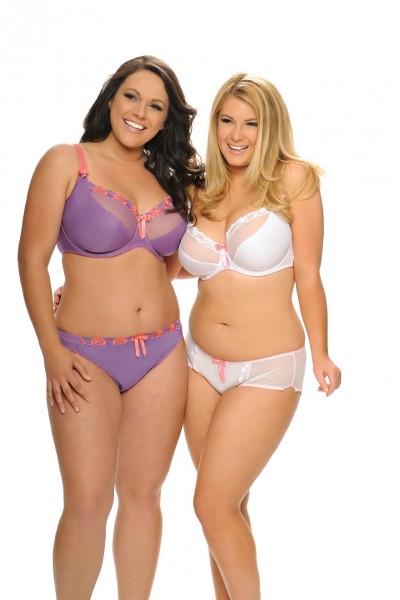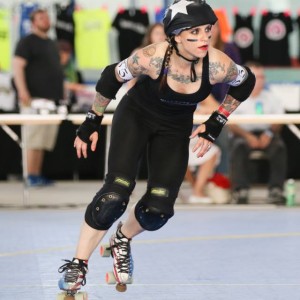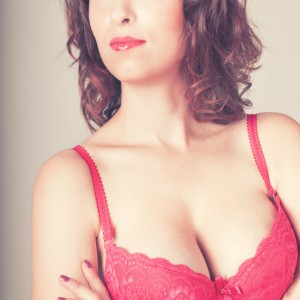It Happened to Me: My Cup Size Changed and I Sort of Had an Existential Crisis
Women with fuller figures are often taught to feel like we should compensate for the fact that our bodies are bigger. There is a very narrow idea of what an “acceptable” plus size body looks like, so many of us are proud of our thin legs, our round butts or our big breasts, and often feel as if they're our redeeming qualities, to “make up” for the rest of our bodies. So as a plus-sized adolescent, I grew up thinking, “At least my boobs are big!” And even as an adult who has often fluctuated between straight and plus sizes, that idea stuck. When you're shamed for most of your parts, those "desirable" parts can become so important.
That is certainly one reason why my cup size has always been a part of my identity: “I’m an entrepreneur, I’m a painter, I’m an extrovert, I’m a 34F.” It defined where I shopped, what brands of lingerie and swimwear I could buy, and the type of person I thought was attracted to me. I wore that number like it was my USP. And even though as an adult I am much more comfortable with my body than I was as a kid, I still saw it as a defining aspect of myself.
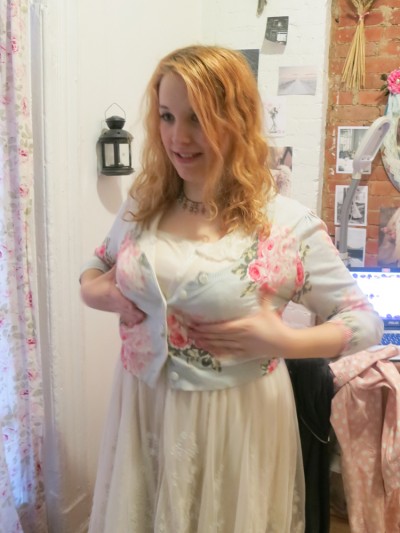
A silly outtake from a photoshoot in February 2014. Cup size 34F
The term "full bust" itself is contested, as represented in the comments of our post about Adina Raey, whose "full bust" bras only go up to a G cup. Plus, just like clothing sizes, bra sizes are very arbitrary and vary wildly between brands and decades. But it never mattered. I put so much of my physical and sexual identity on the size of my breasts as a defining characteristic that when they started changing and I could no longer fill out a 34F, I didn’t know how to view myself.
I noticed it one night in bed when I realized my breasts didn’t fall to the side as much as they used to. I started running a year ago as a way to deal with depression and it changed my life, but also, apparently, my body. Despite feeling like I was eating my entire kitchen every single day while I trained for my first half marathon, I was losing weight, and a lot of it was coming off my chest. After struggling with weight my entire life — trying to lose it, ignore it, love it — I thought had finally, truly accepted myself in the body I was in, and now, as a 34DD, it looked different. In my mind, I now fit into a different category. I was nervous to be naked or in a bikini in front of people because I didn’t know how to interact with my body.
Differences often bring people together, and within the world of full bust lingerie, that means I could talk with other similarly-sized women about those cute little lace bralettes that didn't fit me, or celebrate that full bust styles get cuter and more interesting every season. But I'm not in that category anymore. I don't have to shop at specialty stores, so I no longer share those problems. If I want, I can buy bras at Victoria’s Secret or even Target that fit properly. I can wear my own bralette designs without an underwire bra underneath. Once I no longer felt like I was in the "full bust" category, I no longer saw my cup size as my USP, and it was disorienting.
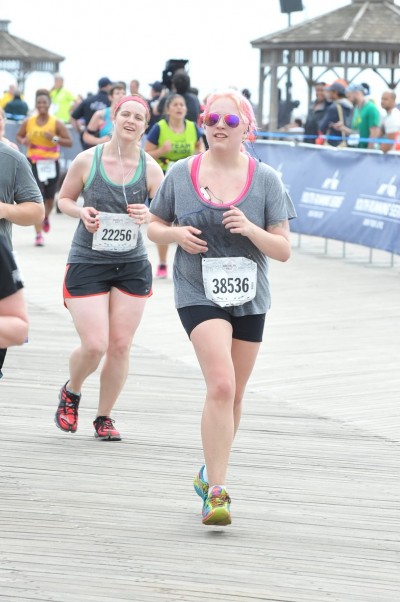
Finishing the Brooklyn Half Marathon in May 2015. Cup size 34DD, strapped down in a Shock Absorber Run bra.
One afternoon when I showed up at lunch wearing a high-compression sports bra after a run, a friend asked, “What happened to your boobs?!” Comments like that aren’t meant to be insulting, of course, but when you see your cup size as part of your identity, it becomes a question about your existence. “What happened to your boobs” translated to “What happened to you” in my head. And who do people see if they don’t see a girl with larger-than-average breasts? It felt like I had sacrificed some physical part of myself for the sake of my mental health. Those two aspects of yourself shouldn't be at all similar in importance, but I felt almost guilty for running and inadvertently changing my body. Which is ridiculous. My friend was more interested in the fact that I was doing well than the size of my body, because she's always seen more than a girl with larger-than-average breasts. Most people in my life have.
Our bodies change over the course of our lives, and although those numbers are needed for proper bra fitting, they don't have to be so significant. The way I view my body and the importance I put on my cup size is changing. When my breasts shrank, my world didn't actually fall apart. In fact, it dramatically improved, because I was doing something that was positive for myself, regardless of how I changed physically. I realized that number never really mattered to begin with. I can finally mentally connect my breasts to the rest of my body, and accept it all. It's a body that can cart a box of apparel samples across the garment district or run 13.1 miles straight. A body that I think is appealing and interesting in many ways, physically or otherwise. I don’t need to identify so closely with the shape of my body, because my existence is so much more than my cup size.





